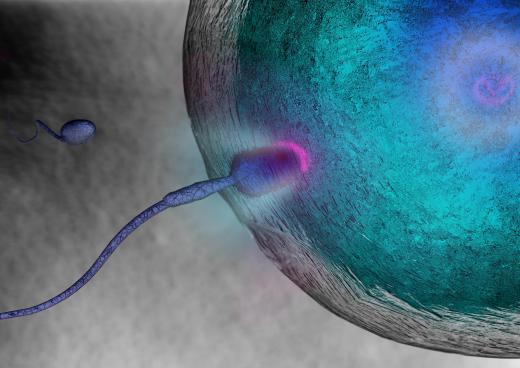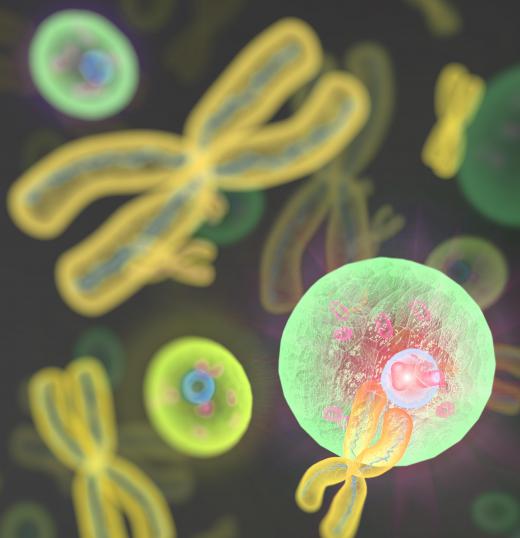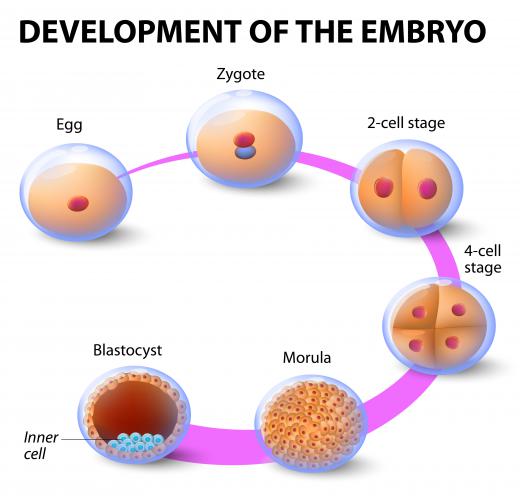What is a Translocation?
In biology, translocation refers to two completely different processes. In botany, or the study of plants, translocation is the movement of material from one place to another within a plant. In genetics, it is the exchange of parts between two chromosomes. In this article, we are going to be looking at chromosomal translocation specifically.
Within the nucleus of all cells, strands of DNA form chromosomes, which is where the genes are located. All cells of the body, except reproductive cells, have matching pairs of chromosomes, or homologous chromosomes. In homologous chromosomes, both chromosomes are the same size and shape and have the same genes in the same location. One of each pair comes from the mother and one from the father. Within the reproductive cells, or sex cells, only one copy of each chromosome occurs.

A translocation is a form of structural alteration that occurs between non-homologous chromosomes. It often occurs during meiosis when the chromosomes are close together. During a translocation, portions of non-homologous chromosomes break off from the original and are then interchanged. The result of a translocation is that the structure of the two chromosomes has now been changed.

Different chromosomes do not carry the same genes in the same location, so different genes are interchanged during a translocation. Translocations do not affect the number of genes in the cell as no parts of the chromosome are lost. They can affect how the genes are expressed by the cell because the sequence of the genes is changed. Since a translocation does not cause a loss of genes in a cell, it rarely affects a somatic cell, a non-reproductive cell.

Translocations do affect the formation of gametes, or sex cells. During meiosis, the homologous pairs of chromosomes line up and are separated to form gamete cells with only one copy of each chromosome. If one chromosome of a pair has undergone a translocation, it may not be able to pair up with its partner due to a change in size or shape. This can actually block meiosis altogether, which stops the formation of sex cells.

If meiosis does go ahead, the non-homologous chromosomes that have exchanged genes will only be grouped together half of the time. When they do not, the gametes that are formed will either have duplicate genes or they will be missing genes. Duplicate and missing genes occur when the one correct chromosome is segregated with the other chromosome carrying the translocated gene, so there will be two copies of one gene and no copies of the other that was switched out.
If fertilization occurs with either of these types of gametes, the resulting zygote may not be viable, or die. If the zygote does survive and one copy of a gene is missing, this can lead to harmful recessive genes being expressed by the cell. With a normal zygote formed from two normal gamete cells, these recessive genes are usually masked by the dominant ones, so they are not expressed by the organism.
Translocations are most often caused by X-ray induced damage to the chromosomes in the cell. The damage makes the bonds within the chromosomes weaker, thus making them more susceptible to breakages. The breaks lead to many different kinds of chromosome mutations, including translocations. Some common human diseases caused by translocations are cancer, infertility and Down syndrome.
AS FEATURED ON:
AS FEATURED ON:














Discuss this Article
Post your comments